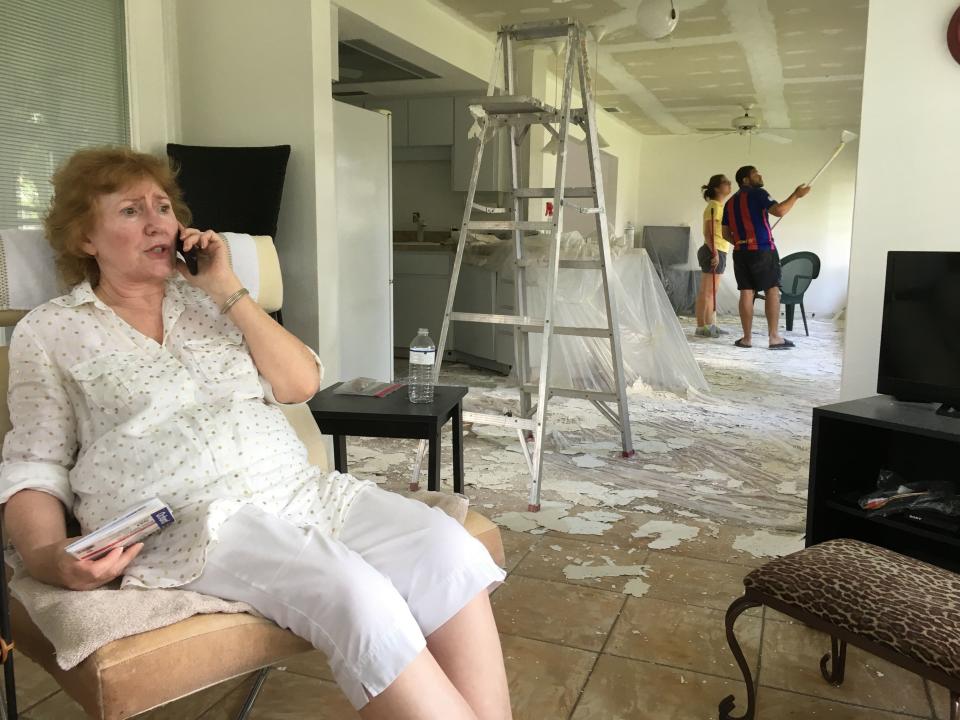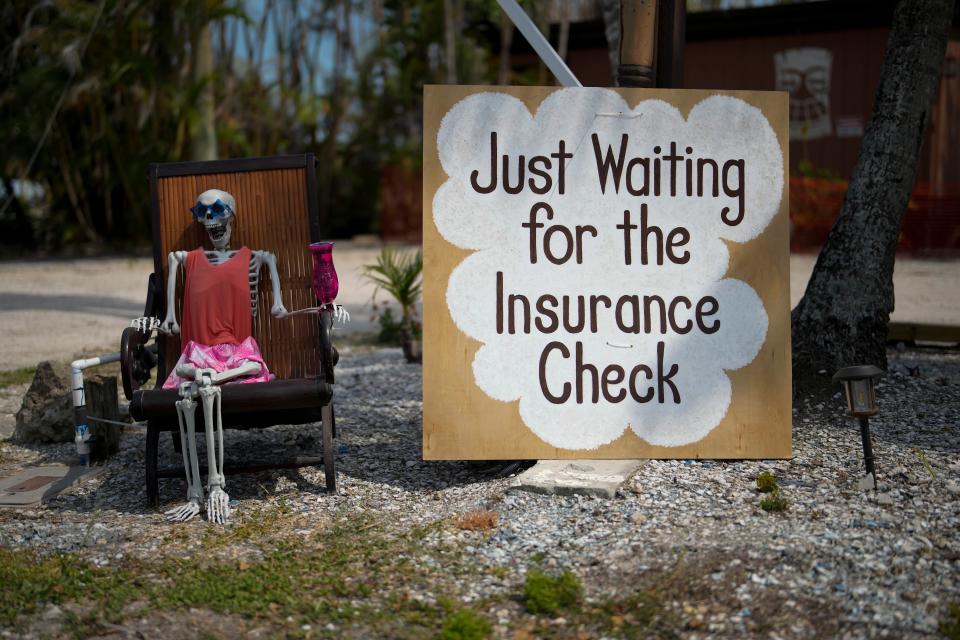The dull way Americans are being forced to care about climate change risk: Insurance
- Oops!Something went wrong.Please try again later.
DENVER ‒ Smoke descended on New York City, oceans are rising, arctic ice is melting. But one of the most significant and undeniable ways Americans will be impacted by climate change is far less dramatic: Insurance.
Insurance companies across the country are increasingly altering where and how people can live in flood, storm or wildfire-prone areas. State Farm and Allstate have made national headlines recently for their decisions to not offer new homeowner policies in disaster-prone California, and other companies have pulled out of or dramatically raised rates in Louisiana, Florida and Colorado.
In other words, whether or not you believe climate change is a problem, your data-driven insurance company already does — and it's responding, in most cases faster than government regulators. A 2022 report by USA TODAY explored a looming financial catastrophe caused in part by government assurances that people can rebuild where they previously lived, instead of being prompted to relocate somewhere safer.
A recent poll by Ipsos found that 90% of Democrats report being concerned about climate change, compared to 34% of Republicans, many of whom live in disaster-prone states like Florida and Texas.
"What you're really getting into is having to adjust how and where we build to make things are insurable," said Craig Fugate, the head of FEMA during the Obama administration. "The argument has always been that building restrictions make homes unaffordable. But the new question has to be: Is it insurable?"

What does climate change have to do with insurance?
Virtually anyone buying a house with a mortgage must have homeowner's insurance, and insurance companies in disaster-prone areas have been significantly raising rates or withdrawing altogether from certain areas. If you don't have insurance, you can't get a mortgage.
Here's how that connects to climate change:
Risk determines insurance prices: Insurance works by pooling risk among large groups of people who pay premiums, and then paying out that money to people who have suffered a loss.
Climate change increases disaster risk: In places where climate change is driving more destructive disasters, insurers have suffered significant losses.
Politicians try to cap insurance prices: Some state regulations designed to protect residents from drastic rate increases bar insurers from quickly charging higher premiums to make up those losses.
Insurance companies withdraw from areas where prices can't keep up with risk: Karen Collins, the vice president for property & environmental issues at the American Property Casualty Insurance Association said something has to give. Either state regulators give insurers more flexibility to raise rates to account for climate-change related disasters and inflation, or insurers will continue withdrawing.
"We've become a canary in the coal mine," said Collins.
In states where private insurers have already stopped providing wildfire or flood insurance, state or federal officials stepped in, potentially putting taxpayers on the hook.

What does this mean for disaster-prone areas?
Until now, residents of disaster-prone areas have been able to get reasonably affordable insurance through private companies, or through affordable government policies. But as those companies or the federal government tighten up where they insure and what they charge, people may find themselves priced out because rates have been kept low for so long.
Fugate, the former FEMA administrator summed up the current problem: "We're not pricing climate risk in our decisions."
Insurers who continue providing coverage, meanwhile, are expected to increasingly force homeowners to up the amount of defensible space to protect against wildfires, and to push lawmakers to adopt stricter building codes that can help homes better survive storms.
I don't live in a disaster area. Why should I care?
If insurers pull out and only last-resort federal insurance is left, taxpayers could be responsible for picking up the tab.
Additionally, places that were not previously considered at risk for catastrophic wildfires, hailstorms, flooding and wildfire may now be in peril.
In Colorado, for instance, the wind-driven 2021 Marshall Fire near Boulder destroyed more than 1,000 structures, most of them homes, as it became the state's worst wildfire in history. That $2 billion Dec. 30 fire sparked near fields that normally might have been covered with snow, and then roared into adjacent suburban neighborhoods, destroying a hotel and scorching a shopping center, but never burning anywhere that would traditionally have been considered ripe for a forest fire.
Other areas might see more hurricanes, tornadoes or flooding exacerbated by climate change.
"It's a perfect storm from escalating catastrophes to skyrocketing inflation and construction costs and even labor shortages," said Carole Walker of the Rocky Mountain Insurance Information Association.
The insurance problem is set to get worse.
While local governments and developers have been reluctant to halt construction in coastal flood-prone areas or in wildfire zones, insurers looking at the bottom line are essentially making that decision on their behalf. Unshackled from the need to be popular ‒ and focused almost entirely on ensuring they stay in business as climate change drives increasingly large disasters ‒ insurers are effectively forcing new land-use decisions.
In Louisiana, for instance, state officials are suing the federal government over its decision to drastically raise flood-insurance premiums in order to cover losses and prepare for the future. Their argument, in part: high premiums will force people to abandon their property and leave the state, lowering property values.
Louisiana Attorney General Jeff Landry said it was "abuse" for the federally run flood insurance program to raise rates so dramatically. FEMA administers the National Flood Insurance Program because private insurers are often unwilling to insure properties in high-risk areas.
"Insurance companies are not built to lose money. They have an incentive to sell policies, and if they aren't selling policies they think it's because they can't make money," Fugate said. "The insurance companies are seeing that now, in certain areas, the risk that they had once in 20 or 30 years is now every couple of years, or every year. They're having to make those hard decisions to pull out of markets."
This article originally appeared on USA TODAY: State Farm, Allstate California news: US insurance woes to get worse

